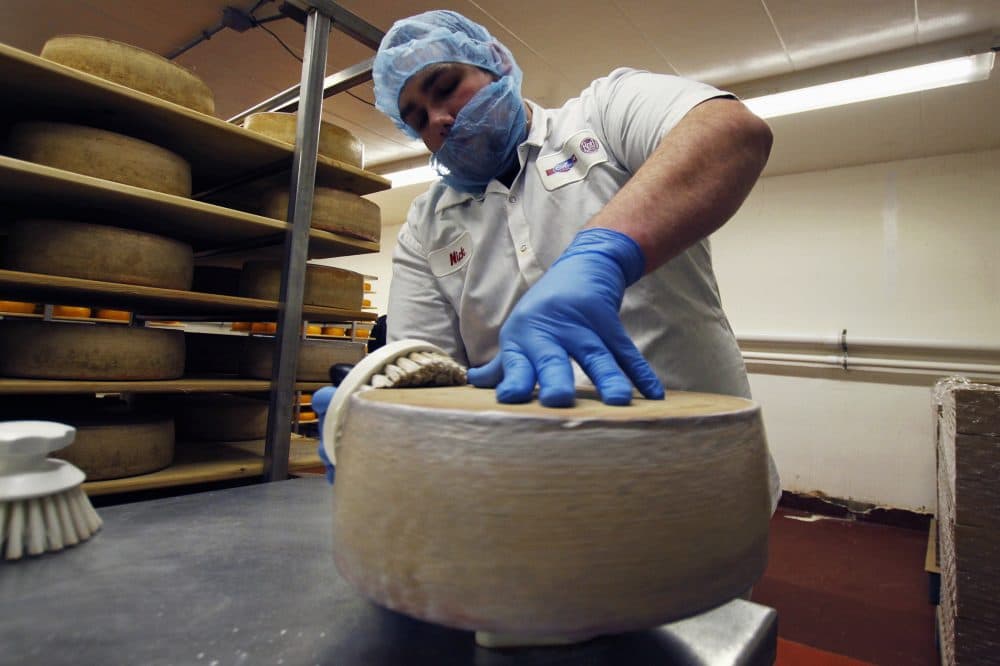Advertisement
The Vast And Wonderful World Of Cheese
Resume
"'Gorgonzola?' 'No.' 'Parmesan?' 'No.' 'Mozzarella?' 'No.' 'Pipo Creme?' 'No.' 'Any Danish Fimboe?' 'No.' 'Venezuelan beaver cheese?' 'Not today, sir, no.'"
That is from the infamous Monty Python cheese shop sketch, where a customer attempts to purchase cheese from Ye Olde Cheese Emporium, a cheese shop that has no cheese in stock whatsoever, including Venezuelan beaver cheese, which does not, in fact, exist.
But in her book, "The Oxford Companion to Cheese," University of Vermont professor Catherine Donnelly goes through hundreds of cheeses that do exist, from touloumotiri, a cheese aged in the cleaned and salted skin of a goat, to tymsboro, a pyramid-shaped goat's milk cheese from England.
Guest
Catherine Donnelly, professor of nutrition and food science at the University of Vermont.
Interview Highlights
On the many varieties of cheese
"It's estimated there are about 1,400, very diverse types that we enjoy globally. I think we have 255 [in the book]. We couldn't do an entry on all 1,400 because it would be volumes of books, so we had to be a little selective."
On her favorite cheese
"It's like asking what your favorite child is. I have so many favorites ... Winnimere, I think it's a fantastic cheese. I'm a little biased because it's made in Greensboro, VT ...
It is a cheese made in the tradition of a French cheese called, Vacherin Mont d'Or. The idea that we can take that technology and replicate it here in Vermont and enjoy this absolutely stunning cheese that really is a living food — and is so beautifully crafted, wrapped in spruce bark.
On studying cheese
"I think what makes cheese and studying cheese so interesting is many of the varieties like Roquefort that's been made for 700 years, and so we didn't understand microbiology back in those days, but learned how to harness those beneficial organisms and put them to work for us."
On the many places around the world that make cheese
"... There were 325 authors from around the world that contributed to this book and several were from Iran — one of the places where cheese originated ...
Motal Paniri is probably one of the oldest cheese on the planet ... I had to edit all of the entries and I remember this one distinctly when it came in because it's a goat or a sheepskin cheese, and typically when you're using skin as a vessel to help in cheese making, it's devoid of hair. But in the case of some Iranian cheeses, the hair is actually on the inside of the vessel where the milk goes and produces cheese ...
[It tastes] probably a lot like feta. It's that type of white brined cheese style.
This segment aired on May 30, 2017.